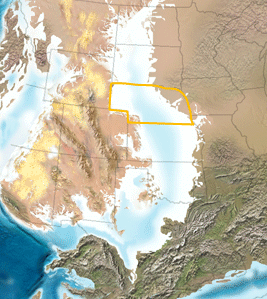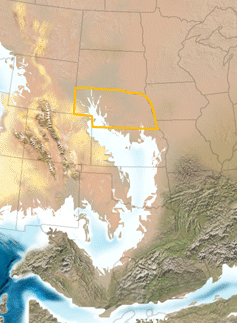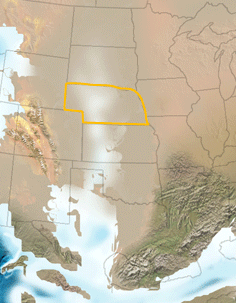
315 Ma |
Lower Pennsylvanian Epoch
Pennsylvanian seas advanced over a highly eroded and faulted land surface - all the older Paleozoic rocks had been removed over the Nemaha Uplift (in southeastern Nebraska) and the Cambridge Arch (in Western Nebraska).

300 Ma |
Upper Pennsylvanian Epoch
At this time, cyclothem deposits were occuring within the Midwestern states, including Nebraska. When sea levels were relatively high, black shale was deposited.

290 Ma |
Cisuralian Epoch
During periods of transitioning sea level, limestones are deposited.
Permian rocks deposited during this time consist of shale, limestone, and sandstone. The rocks indicate an arid climate with drying seas (based upon the occurrence of gypsum and salt - both evaporite products).

275 Ma |
Cisuralian Epoch
When sea levels were relatively low, coals and/or paleosols (ancient soils) were deposited.
At this time, a gradual shift toward more terrestrial conditions occurs.

260 Ma |
Lopingian Epoch
Terrestrial conditions occur in Nebraska, producing an unconformity (or erosional gap) within the rock record.